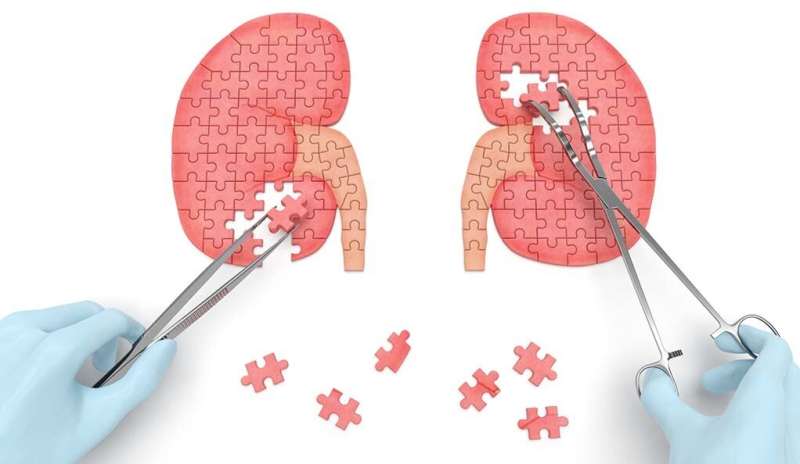Credit: stock.adobe.com
Each year, over 2 million people visit U.S. emergency departments for suspected renal colic, which typically causes intense flank or abdominal pain due to kidney stones blocking the urinary track.
Led by Christopher L. Moore, Yale associate professor and chief of the section of emergency ultrasound in the department of emergency medicine, a group of multidisciplinary researchers conducted a systematic review of the scientific literature and engaged in a structured consensus process to determine scenarios where CT could be avoided in the diagnosis of renal colic. While CT scans are accurate in identifying renal colic, the technology can expose patients to harmful radiation and often don't change management of the condition, said the researchers.
"In many cases CT scanning hasn't been shown to impact patient-centered outcomes, and there was broad consensus that we're overutilizing CT imaging for kidney stones," Moore said. "With CT you're providing significant radiation; there's expense, and incidental findings that can lead to further imaging that is usually not helpful."
The researchers pointed to other types of diagnostic imaging that can be used for patients who might have kidney stones, specifically ultrasound. The evidence from the study suggests that point-of-care ultrasounds, completed by a medical professional at the patient's bedside, or radiology-performed ultrasounds, a reduced-radiation ultrasound, can often provide adequate information and accuracy to guide treatment.
The study finds that CT may be avoided in many common clinical scenarios where kidney stones are suspected. When CT is needed, a reduced-radiation dose approach should be used, the researchers said.
Moore said the researchers' analysis presents a multispecialty effort to recognize a safer mode for identifying kidney stones. "What's innovative about this project is that we were able to reach across three specialties, including emergency medicine, radiology and urology, and it speaks to collaboration across the specialties to work on this."
The research was recently published in journals representing three specialties: Annals of Emergency Medicine, the Journal of the American College of Radiology, and the American Urological Association's Journal of Urology.
More information: Christopher L. Moore et al. Imaging in Suspected Renal Colic: Systematic Review of the Literature and Multispecialty Consensus, Journal of Urology (2019). DOI: 10.1097/JU.0000000000000342
Christopher L. Moore et al. Imaging in Suspected Renal Colic: Systematic Review of the Literature and Multispecialty Consensus, Annals of Emergency Medicine (2019). DOI: 10.1016/j.annemergmed.2019.04.021
Christopher L. Moore et al. Imaging in Suspected Renal Colic: Systematic Review of the Literature and Multispecialty Consensus, Journal of the American College of Radiology (2019). DOI: 10.1016/j.jacr.2019.04.004
Journal information: Annals of Emergency Medicine , Journal of the American College of Radiology , Journal of Urology
Provided by Yale University






















